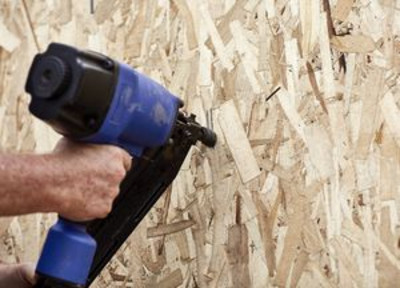KANBrief 1/21

Stud guns, nail drivers and captive bolt devices are items of work equipment sharing a common characteristic: their use gives rise to isolated shocks that also act upon the user and may pose a hazard. Assessment and reduction of the hazard requires a standardized measurement procedure.
Repeated isolated (discrete) shocks are regarded as a special form of hand-arm vibration. No consensus exists on the criteria for differentiating between isolated shocks and the typical hand-arm vibrations occurring for example on pneumatic drills. Measurement of repeated isolated shocks presents major challenges, and as yet, no recognized measurement method exists for determining exposure. Little is also known of the health effects of long-term exposure to isolated shocks. By contrast, circulatory disorders and harm to the joints in the hand-arm system caused by typical hand-arm vibration are formally recognized in Germany as occupational diseases.
The Institute for Occupational Safety and Health of the German Social Accident Insurance (IFA) has been addressing the topic of isolated shocks for many years, and is also involved in relevant standardization activity. Since no consensus existed at European level on measurement methods for isolated shocks, the IFA requested KAN’s support in order firstly to explore the possibility of a standard at national (i.e. German) level.
On 20 October 2020, the KAN Secretariat hosted a virtual KAN expert discussion on the subject of hand-arm vibration exposure caused by isolated shocks. Experts in vibration from a number of stakeholders in Germany took part in this discussion. The stakeholders included the research sector, accident insurance institutions, employees, manufacturers, testing laboratories, the German regional authorities and the standardization sector. The experts first shared their information, on the basis of which they were able to discuss further steps.
The papers and discussions showed that a considerable need for research still exists into the hazards presented by isolated shocks, for example into their physiological mechanisms of action and diagnosis of their effects. In order to coordinate further research projects and disseminate information specifically to occupational physicians and to experts in other medical disciplines, the participating research institutes will network more closely with each other and with other experts in vibration in Germany.
The experts consider the establishment of guidance values and the evaluation of measurement results to be topics relevant to occupational safety and health. Further research results are needed to address these issues. To this end, the DGUV is currently funding a project for research into isolated shocks to the hand-arm system caused by machines and tools, which the IFA is conducting jointly with the Institute for Occupational Medicine, Prevention and Health Management of the University of Lübeck and the RISE Research Institute of Sweden. The project is intended to deliver information on the health effects of isolated shocks.
Parallel to the research activity, a measurement standard is to be developed concerning the determining of exposure to isolated shocks. The relevant terminology is also to be standardized. The participants in the expert discussion indicated their desire for the KAN Secretariat to submit an application for a national standard. KAN will discuss this item at its next meeting in spring 2021.
A comparable measurement method and the availability of guidance values would enable adequate consideration to be given in risk assessments to repeated isolated shocks and enable preventive measures to be determined. In the long term, this should provide users with better protection against potential hazards.
Dr Anna Dammann
dammann@kan.de